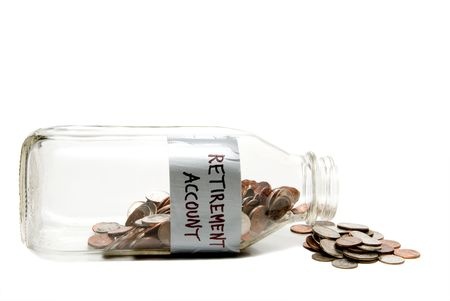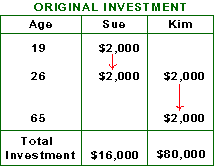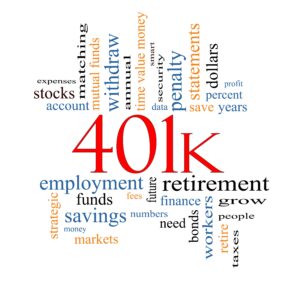 Retirement Accounts
Retirement Accounts
Government and employer sponsored retirement accounts such as 401(k)s and IRAs are the best ways to save for your retirement goals. Depending on your situation, you can choose from:
- For (almost) everyone: IRAs (Regular, Spousal, Roth)
- For employees at larger organizations: 401(k), 403(b)
- For small businesses and the self-employed: SEP IRAs, Keoghs, SIMPLEs
In this section, we describe:
- Why retirement accounts are such powerful investment vehicles for retirement savings.
- The primary types of retirement accounts (including 401(k)s, the various types of IRAs, and options for the self-employed).
- Some basic strategies for deciding how to invest these funds.
Why Retirement Accounts Are So Powerful
Government and employer sponsored retirement savings accounts are the most powerful retirement vehicles available because they combine the benefits of 4 of the most effective principles of saving:
- Compounding interest
- Consistent saving
- Reduction in taxable income
- Tax-deferred growth
Compounding interest
 |
|
By investing early (ages 19-26) to let the power of compounding work for her, Sue invests 1/5 as much as Kim but earns 25% more than Kim. |
Compounding is a cumulative snowball effect of interest accumulating over time, both on your original investment as well as the interest earned. Money compounding at a steady rate of return grows not at a constant but at an accelerated rate. So the longer your money can compound, the more you will enjoy the benefits.
Without compounding, $1,000 invested at 10% for 20 years would grow to $3,000. This may sound fine, but with that same investment compounding at 10% interest, you would end up with $6,730–almost 7 times your original investment.
Consistent saving
Steady progress towards retirement savings, even if small and steady, has proven to be the most successful approach to saving for retirement.
Why?
The reason isn`t financial–people simply tend to put off saving for retirement, and thereby let valuable time pass when their money could be compounding. Compounding is just as effective on small amounts of money as it is on large amounts.
Reducing taxable income
One of the best reasons to use retirement accounts (some, but not all, offer this benefit) is that those contributions reduce your taxable income. In other words, you don`t have to pay taxes on the amount you invest.
This may not sound all that significant, but if you consider that you don`t have to pay tax on a $4,000 contribution to your retirement account and your effective tax rate is 28%, you simultaneously save $1,120 in taxes and have that much more money compounding for you.
Tax-deferred growth
Much like reducing your taxable income, tax-deferred investments are given special tax status. With retirement investments, you have to pay capital gains tax when you sell investments for more than their purchase price. You also pay tax on any dividends received. In tax-deferred retirement accounts, however, your money is allowed to grow tax-free, so you only have to pay taxes when you withdraw funds from your account. Since taxes don`t take a bite while your money grows, the acceleration of compounding is maximized.
Retirement Vehicles
Individual retirement accounts
Summary of Tax Law Changes fro 2010-2017
You may contribute up to $5,500 of your earnings for 2016 or up to $6,500 if you are age 50 or more because of the extra $1000 catch-up amount. You may fund a traditional IRA, a Roth IRA (if you qualify), or both, but your total contributions cannot be more than these amounts.
You may be able to take a tax deduction for the amounts you put into a traditional IRA, depending on whether you – or your spouse, if filing jointly – are covered by an employer’s pension plan and how much total income you have. You cannot deduct Roth IRA contributions, but the earnings on a Roth IRA may be tax-free if you meet the conditions for a qualified distribution.
How do these IRAs differ? Roth and Spousal IRAs were created in 1998 to offer more flexible alternatives to the regular IRA
(check with www.irs.gov and your tax advisor for current and complete information)
Spousal IRAs
- These allow spouses to take full advantage of IRAs, regardless of the other spouse`s retirement arrangements.
- A full-time homemaker is now eligible for an IRA contribution of up to $5,000, even if he or she doesn’t generate income.
Roth IRAs
These IRAs were designed primarily for people with qualified company retirement plans or whose income exceeds the deductibility limits of traditional IRAs.
- Contributions made to Roth IRAs are not tax-deductible, but when you withdraw your money in retirement, you will not have to pay taxes.
- You can withdraw the amount invested at any time without penalty or tax.
- The earnings, however, are subject to penalty and tax. This flexibility is very attractive to many savers.
- Unlike traditional IRAs, Roth IRAs don`t have a mandatory withdrawal in retirement. This makes Roth IRAs attractive for passing tax-free wealth to heirs.
Which type of IRA is best for you? Learn more about IRAs and compare the options with a Regular IRA or Roth IRA Tool.
Employee retirement accounts: 401(k), 403(b)
What exactly are these? In a sense, these are personal pensions. In the past, large corporations administered defined 401(k) and 403(b) benefit plans (or in other words, pensions) that guaranteed a certain level of income after you retire. Now, 401(k) plans are becoming more common because pensions are costly to administer, and people are changing jobs more often.
Instead of defined benefits, 401(k) plans have defined contributions. Employers define how much they will contribute up front but make no promises about what you will have when you retire. You administer the funds in your 401(k) plan, and are responsible for making sure that they are invested appropriately to provide enough money for you during your retirement. 403(b) plans are similar to the 401(k)s, but are designed for public-sector employees.
Certain 401(k) plans are better than others but they are all sound retirement vehicles. Why?
- Contributions are tax-deductible.
- Investments grow tax-deferred.
- The annual contribution limit is high–$17,500 for 2014 and $18,000 for 2016. Employees age 50 or over may be eligible to make an additional contribution of up to $5,500 in 2014 and $6,000 for 2016.
For further information, refer to Tax Topic 424, 401(k) plans.
- Companies that offer 401(k) plans usually have a direct draw system so your contributions to your 401(k) are automatically withdrawn from each paycheck, so you can effortlessly and steadily save.
- Employers make matching contributions. The typical match is between 50-100% for between 3-6% of your salary and does not apply to the employees annual contribution limit. The matching employer contribution can range from 0%-100% with a maximum of no more than 6% of the employees salary.
|
The best reason of all to take advantage of a 401(k) plan is the matching contributions from your employer. See this example and the tremendous savings that are created:
|
For Small Businesses and the Self-Employed
The retirement savings plans that big companies offer like the 401(k) are wonderful, but their complexity and cost make them inaccessible for small businesses, not to mention the self-employed.
To help both groups, the government created special retirement savings plans such as:
- Keoghs
- SEP IRAs
- SIMPLEs
In essence, these retirement accounts allow you to set up a personal pension. Like IRAs, the contributions you make to these plans are tax-deductible and cannot be withdrawn before retirement age without penalty.
What distinguishes these retirement vehicles are their much higher contribution limits; depending on the type of account, you can invest between $6,000 and $30,000 per year. The drawback to these plans–at least if you have employees is that employers must contribute the same percentage of their salaries to their employee`s accounts as they do to their own accounts.
Click here to learn more about the specific qualifications and rules of each kind of retirement account.
Asset Allocation Within Your Retirement Account
Women often invest their retirement accounts too conservatively, so they yield lower returns and can be left shortchanged during retirement. Regardless of the type of retirement account you use, the principles of asset allocation remain the same and will help you achieve the right balance between risk and return.
Asset allocation may sound a little esoteric. Technically, the term means figuring out the right mix of growth investment vs fixed investments. In other words, asset allocation simply means finding the mix of investments that balance risk and return given your age, risk optimal tolerance, and investment goals.
Why Determining the Right Asset Allocation Matters
|
Along with when you start investing, the rate of return on your investment will determine how much your retirement savings will grow. Your rate of return typically depends on the amount of risk you`re willing to take–the riskier the investment, the higher the potential return. |
|
The value of $2,000 invested per year ($166 a month) with different rates of return
|
For a more detailed discussion of these investment vehicles, read MsMoney.com`s Investing section or go directly to Stocks, Bonds, and Mutual Funds.
Determining the Right Asset Allocation For Your Retirement Plan
To determine the right mix of investments, you can use MsMoney.com`s quick rule of thumb:
- Take your age and subtract it from 110.
- The answer is the percentage of assets you should put in stocks or stock-based mutual funds.
- The rest of your assets should go into something less volatile such as bonds and fixed-rate securities.
Rule of Thumb: Asset Allocation for Retirement Account
|
Your Age |
110 – Your Age |
% of Assets in |
% of Assets in |
|---|---|---|---|
|
20 |
90 |
90% |
10% |
|
25 |
85 |
85% |
15% |
|
30 |
80 |
80% |
20% |
|
35 |
75 |
75% |
25% |
|
40 |
70 |
70% |
30% |
|
45 |
65 |
65% |
35% |
|
50 |
60 |
60% |
40% |
|
55 |
55 |
55% |
45% |
|
60 |
50 |
50% |
50% |
|
65 |
45 |
45% |
55% |
In general, the older you become, the smaller portion of your retirement account you will invest in higher risk stocks. The closer you reach your retirement age, the less risk you will want to take with your investments.


